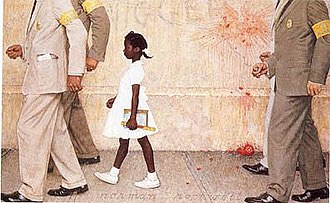On election night, Zohran Mamdani gave the following speech, celebrating his victory and also the multicultural coalition that made his victory possible. He is now the Mayor-elect of New York City. He is 34 years old, the youngest Mayor in more than a century. He was born in Uganda to Indian parents. His father is a professor of African Studies at Columbia Unicersity, his mother is a noted film-maker. He is a graduate of the Bronx High School of Sciebce–a selective public high school–and Bowdoin College. He was elected to the State Assembly in 2032, representing the Astoria district of Queens
This transcript was published by The Guardian..
The sun may have set over our city this evening, but as Eugene Debs once said: “I can see the dawn of a better day for humanity.”
For as long as we can remember, the working people of New York have been told by the wealthy and the well-connected that power does not belong in their hands.
Fingers bruised from lifting boxes on the warehouse floor, palms calloused from delivery bike handlebars, knuckles scarred with kitchen burns: these are not hands that have been allowed to hold power. And yet, over the last 12 months, you have dared to reach for something greater.
Tonight, against all odds, we have grasped it. The future is in our hands. My friends, we have toppled a political dynasty.
I wish Andrew Cuomo only the best in private life. But let tonight be the final time I utter his name, as we turn the page on a politics that abandons the many and answers only to the few. New York, tonight you have delivered. A mandate for change. A mandate for a new kind of politics. A mandate for a city we can afford. And a mandate for a government that delivers exactly that.
On 1 January, I will be sworn in as the mayor of New York City. And that is because of you. So before I say anything else, I must say this: thank you. Thank you to the next generation of New Yorkers who refuse to accept that the promise of a better future was a relic of the past.
You showed that when politics speaks to you without condescension, we can usher in a new era of leadership. We will fight for you, because we are you.
Or, as we say on Steinway, ana minkum wa alaikum.
Thank you to those so often forgotten by the politics of our city, who made this movement their own. I speak of Yemeni bodega owners and Mexican abuelas. Senegalese taxi drivers and Uzbek nurses. Trinidadian line cooks and Ethiopian aunties. Yes, aunties.
To every New Yorker in Kensington and Midwood and Hunts Point, know this: this city is your city, and this democracy is yours too. This campaign is about people like Wesley, an 1199 organizer I met outside of Elmhurst hospital on Thursday night. A New Yorker who lives elsewhere, who commutes two hours each way from Pennsylvania because rent is too expensive in this city.
It’s about people like the woman I met on the Bx33 years ago who said to me: “I used to love New York, but now it’s just where I live.” And it’s about people like Richard, the taxi driver I went on a 15-day hunger strike with outside of City Hall, who still has to drive his cab seven days a week. My brother, we are in City Hall now.
This victory is for all of them. And it’s for all of you, the more than 100,000 volunteers who built this campaign into an unstoppable force. Because of you, we will make this city one that working people can love and live in again. With every door knocked, every petition signature earned, and every hard-earned conversation, you eroded the cynicism that has come to define our politics.
Now, I know that I have asked for much from you over this last year. Time and again, you have answered my calls – but I have one final request. New York City, breathe this moment in. We have held our breath for longer than we know.
We have held it in anticipation of defeat, held it because the air has been knocked out of our lungs too many times to count, held it because we cannot afford to exhale. Thanks to all of those who sacrificed so much. We are breathing in the air of a city that has been reborn.
To my campaign team, who believed when no one else did and who took an electoral project and turned it into so much more: I will never be able to express the depth of my gratitude. You can sleep now.
To my parents, mama and baba: You have made me into the man I am today. I am so proud to be your son. And to my incredible wife, Rama, hayati: There is no one I would rather have by my side in this moment, and in every moment.
To every New Yorker – whether you voted for me, for one of my opponents or felt too disappointed by politics to vote at all – thank you for the opportunity to prove myself worthy of your trust. I will wake each morning with a singular purpose: to make this city better for you than it was the day before.
There are many who thought this day would never come, who feared that we would be condemned only to a future of less, with every election consigning us simply to more of the same.
And there are others who see politics today as too cruel for the flame of hope to still burn. New York, we have answered those fears.
Tonight we have spoken in a clear voice. Hope is alive. Hope is a decision that tens of thousands of New Yorkers made day after day, volunteer shift after volunteer shift, despite attack ad after attack ad. More than a million of us stood in our churches, in gymnasiums, in community centers, as we filled in the ledger of democracy.
And while we cast our ballots alone, we chose hope together. Hope over tyranny. Hope over big money and small ideas. Hope over despair. We won because New Yorkers allowed themselves to hope that the impossible could be made possible. And we won because we insisted that no longer would politics be something that is done to us. Now, it is something that we do.
Standing before you, I think of the words of Jawaharlal Nehru: “A moment comes, but rarely in history, when we step out from the old to the new, when an age ends, and when the soul of a nation, long suppressed, finds utterance.”
Tonight we have stepped out from the old into the new. So let us speak now, with clarity and conviction that cannot be misunderstood, about what this new age will deliver, and for whom.
This will be an age where New Yorkers expect from their leaders a bold vision of what we will achieve, rather than a list of excuses for what we are too timid to attempt. Central to that vision will be the most ambitious agenda to tackle the cost-of-living crisis that this city has seen since the days of Fiorello La Guardia: an agenda that will freeze the rents for more than 2 million rent-stabilized tenants, make buses fast and free, and deliver universal childcare across our city.
Years from now, may our only regret be that this day took so long to come. This new age will be one of relentless improvement. We will hire thousands more teachers. We will cut waste from a bloated bureaucracy. We will work tirelessly to make lights shine again in the hallways of NYCHA developments where they have long flickered.
Safety and justice will go hand in hand as we work with police officers to reduce crime and create a department of community safety that tackles the mental health crisis and homelessness crises head on. Excellence will become the expectation across government, not the exception. In this new age we make for ourselves, we will refuse to allow those who traffic in division and hate to pit us against one another.
In this moment of political darkness, New York will be the light. Here, we believe in standing up for those we love, whether you are an immigrant, a member of the trans community, one of the many Black women that Donald Trump has fired from a federal job, a single mom still waiting for the cost of groceries to go down, or anyone else with their back against the wall. Your struggle is ours, too.
And we will build a City Hall that stands steadfast alongside Jewish New Yorkers and does not waver in the fight against the scourge of antisemitism. Where the more than 1 million Muslims know that they belong – not just in the five boroughs of this city, but in the halls of power.
No more will New York be a city where you can traffic in Islamophobia and win an election. This new age will be defined by a competence and a compassion that have too long been placed at odds with one another. We will prove that there is no problem too large for government to solve, and no concern too small for it to care about.
For years, those in City Hall have only helped those who can help them. But on 1 January, we will usher in a city government that helps everyone.
Now, I know that many have heard our message only through the prism of misinformation. Tens of millions of dollars have been spent to redefine reality and to convince our neighbors that this new age is something that should frighten them. As has so often occurred, the billionaire class has sought to convince those making $30 an hour that their enemies are those earning $20 an hour.
They want the people to fight amongst ourselves so that we remain distracted from the work of remaking a long-broken system. We refuse to let them dictate the rules of the game any more. They can play by the same rules as the rest of us.
Together, we will usher in a generation of change. And if we embrace this brave new course, rather than fleeing from it, we can respond to oligarchy and authoritarianism with the strength it fears, not the appeasement it craves.
After all, if anyone can show a nation betrayed by Donald Trump how to defeat him, it is the city that gave rise to him. And if there is any way to terrify a despot, it is by dismantling the very conditions that allowed him to accumulate power.
This is not only how we stop Trump; it’s how we stop the next one. So, Donald Trump, since I know you’re watching, I have four words for you: Turn the volume up.
We will hold bad landlords to account because the Donald Trumps of our city have grown far too comfortable taking advantage of their tenants. We will put an end to the culture of corruption that has allowed billionaires like Trump to evade taxation and exploit tax breaks. We will stand alongside unions and expand labor protections because we know, just as Donald Trump does, that when working people have ironclad rights, the bosses who seek to extort them become very small indeed.
New York will remain a city of immigrants: a city built by immigrants, powered by immigrants and, as of tonight, led by an immigrant.
So hear me, President Trump, when I say this: to get to any of us, you will have to get through all of us. When we enter City Hall in 58 days, expectations will be high. We will meet them. A great New Yorker once said that while you campaign in poetry, you govern in prose.
If that must be true, let the prose we write still rhyme, and let us build a shining city for all. And we must chart a new path, as bold as the one we have already traveled. After all, the conventional wisdom would tell you that I am far from the perfect candidate.
I am young, despite my best efforts to grow older. I am Muslim. I am a democratic socialist. And most damning of all, I refuse to apologize for any of this.
And yet, if tonight teaches us anything, it is that convention has held us back. We have bowed at the altar of caution, and we have paid a mighty price. Too many working people cannot recognize themselves in our party, and too many among us have turned to the right for answers to why they’ve been left behind.
We will leave mediocrity in our past. No longer will we have to open a history book for proof that Democrats can dare to be great.
Our greatness will be anything but abstract. It will be felt by every rent-stabilized tenant who wakes up on the first of every month knowing the amount they’re going to pay hasn’t soared since the month before. It will be felt by each grandparent who can afford to stay in the home they have worked for, and whose grandchildren live nearby because the cost of childcare didn’t send them to Long Island.
It will be felt by the single mother who is safe on her commute and whose bus runs fast enough that she doesn’t have to rush school drop-off to make it to work on time. And it will be felt when New Yorkers open their newspapers in the morning and read headlines of success, not scandal.
Most of all, it will be felt by each New Yorker when the city they love finally loves them back.
Together, New York, we’re going to freeze the rent together, New York, we’re going to make buses fast and free together, New York, we’re going to deliver universal childcare.
Let the words we’ve spoken together, the dreams we’ve dreamt together, become the agenda we deliver together. New York, this power, it’s yours. This city belongs to you.





